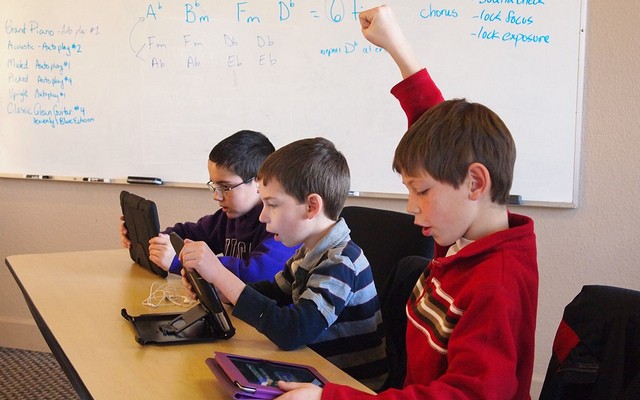Why Should Video Games Be More Widely Used In School?
In China, students can’t play video games during the school week. This is to cut down on how much time young people spend playing video games.
As a scholar who studies game-based learning and a video game designer. I don’t see a reason why students should not be able to play video games during the school week. Instead, I think it should be made bigger, and this should be done during the school day.
One of the most popular forms of art in our time is the video game. By 2025, the global gaming market is expected to be worth $268.8 billion a year, which is a lot more than the $178 billion it is worth in 2021.
The money you spend on games doesn’t just help you escape the real world in a virtual way. Longtime literacy professor James Paul Gee and other scholars have shown over and over that video games can be used to help kids in grades K–12 learn. Greg Toppo, who writes about education and has written a book called “The Game Believes in You: How Digital Play Can Make Our Kids Smarter,” came to the same conclusion.

The Oregon Trail, a popular computer game from the 1970s, taught kids about what it was like for people in the early 1800s to move to the West.
Must Read : 6 Tips for Cracking the IELTS Exam Effortlessly
A long history
It’s not a new idea to use video games in the classroom. People who went to school in the 1970s through the 1990s may remember the famous video game The Oregon Trail. It was first played in a classroom in 1971.
In the game, players guide a group of settlers through the Midwest, just like Lewis and Clark did. The game came out right before the first video game, Pong, which was an electronic version of table tennis and came out in 1972.
Even though educational video games have been used in classrooms for 50 years and research shows that they can be helpful, they are not used in classrooms as much as they used to be.
Since The Oregon Trail, there have been a lot of games that teach kids things. Where in the World is Carmen Sandiego? is one of the most well-known. ‘s Math Blaster! Most of the games are for kids in pre-K to second grade, like Zoombinis, iCivics, DragonBox Algebra, and History Maker VR.
Here are some reasons why every classroom should have video games.
Video games can help students stay in STEM
In 2020, the President’s Council of Advisors on Science and Technology said that the country needs to train the STEM workers of the future. One reason students drop out of or switch out of science, technology, engineering, and math (STEM) programs is that the first courses, like calculus, are hard.

A calculus game was made at the University of Oklahoma to help students do well in calculus. Research has shown that students learn calculus better when they use a learning game like Variant: Limits, which was made at Texas A&M University and is also a calculus game.
They provide experiential learning
The Organization for Economic Cooperation and Development says that it is important for the future workforce to teach students 21st-century skills like creative problem solving. Students can learn skills like critical thinking by playing games like DragonBox Algebra, in which they solve math problems in a fantasy world.
In games like Civilization, players can take on the role of a government leader and decide how well a country does. Learners can join the Medici family in ARTé: Mecenas and become art patrons and successful bankers. Students learn by doing, and through doing, they can gain skills and knowledge that they might not get in a traditional classroom
Players learn from failure
Students can fail safely in games, learn from their mistakes, and try again and again until they succeed.
Some games, like Burnout Paradise* make failure fun. Players can crash their cars in the game, and the more spectacular the crash, the more points they get. This basically lets players learn from their mistakes, fix them, and try again.
In his book “The Art of Failure,” which he wrote before he died, the late video game theorist and author Jesper Juul said that losing in video games is part of what makes them so interesting. When a player fails at a game, they feel like they’re not good enough, but they can immediately try again and get better.
Students stay engaged in content
The average amount of time a student spends learning in class is only 60% of the time. It has been shown that extending the school day to give students more time to learn is not very helpful. Engaged time on task is a better way to make the most of time for learning. When a topic is interesting to them and important to them, they are curious and engaged. This makes learning a lot easier and more fun.

Teachers can get students interested in the classroom. But teachers have to come up with other ways to get students to do their homework. Games are one way to do this. Educational games can make students more interested and motivated, so they spend more time working.
Games make complex knowledge fun
Educational theories say that students can’t understand everything. They have to figure things out on their own. Learners build on what they already know to make their own higher-level and more complicated knowledge.
Many students find it hard to learn and remember the table of the elements. But middle school students who play the popular video game Pokémon can quickly learn a complex three-dimensional matrix with 27,624 values. When fighting other Pokémon, the point of the game is to figure out how to combine the 17 different types of attacks. Each Pokémon can use one or two different kinds of attacks. Players don’t learn the different ways to play by looking at a big table with 27,624 entries. Instead, they learn by playing the game. Students gradually learn more about the game as they play it. They also learn basic skills like reading, how to compete with grace and sportsmanship, and how to think abstractly.
Also Read : Best English Grammar Study Material Books for Exam Preparation
Pokémon is not an educational game, but its design principles. Along with those of other popular games, such as Backrooms Game, can be educational games for classrooms.
